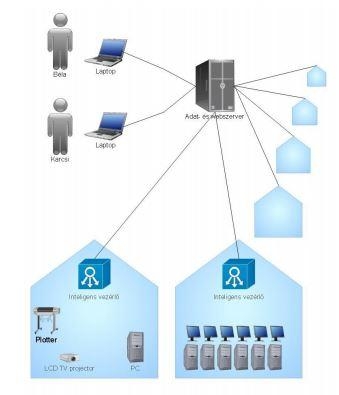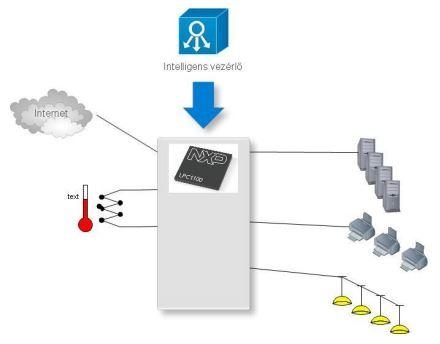
ECRS – Automation for remote control of electrical power consumption
"Automation for remote control of electric power consumption - ECRS" is a product developed by Prompt Computer Technology Inc., supported by a project with the identification number KMOP-1.1.4-11 / B-201 1-0150. The result of the development is an easy-to-use, Internet-managed automation that can significantly reduce energy consumption in institutions where the use of power consumption devices can be scheduled.
Why is it necessary?
At work, in the office, or even at home, we use several electrical appliances that have energy-saving mode. Such devices are not de-energized when not in use, but can be switched to a lower power-use mode. In most cases, the device's power button also "only" turns off the main units inside the device, but the power LED is lit and the electronics are waiting to turn on - and consume power. Sometimes not a little: we can measure up to 5-25 W of power per device turned off.
In an office, computers and monitors, printers, scanners, etc. consume 2 to 10 W even when turned off. The number of such devices varies from office to office, from household to household, but in a small to medium-sized office, the unnecessary power consumption of “off” machines can reach hundreds of watts.
Although complete power outages have traditionally been possible, the experience is that this is either not performed or some devices still need to operate for some time after the end of work (e.g. virus scan, data backup, telecommuting). The automatic de-energization method is justified in many respects, which can be flexibly programmed according to predefined rules, and in special cases, the automation can be suspended too.

System structure
The switching devices - “smart controllers” - turn consumers on or off, and a controller can handle multiple consumers.
These devices communicate with the data server and web server over the Internet. The controllers send data about their operation and status to the server, and receive control instructions from the server (for example: a consumer must be switched on or off at a given moment).
Home / office owners or their agents connect to the server via a web browser and can set the necessary on / off rules (such as scheduling or direct switching) on the web interface.
The design of the controllers is a microcontroller-based custom program device. The main functions of the operation:
- Configures itself automatically in the local area network (DHCP) or use the manual setting.
- Locates and contacts the data server based on the domain name.
- Sends its own status information to the server, referring to the device's four-digit unique ID. (Which can be, for example, the on state of a controlled device or another easily measurable value, such as temperature).
- Receives operating instructions from the server, which is most often to turn one of the devices on or off, but a measurement command is also possible.
- After a pre-set time, it restarts the connection and retrieves instructions.
- The controllers communicate with the data server via a standard HTTP protocol. (This eliminates the need to manage firewall settings).
The advantage of the above explained operation is that it usually does not require any special settings, it can be put into operation immediately, after connecting it can be used in any network where there is Internet access.

The output load capacity of the controller does not require more than the power supply of an average consumer, which is approx. between 50 and 500 W.
Additional high-power relays are required to de-energize complete offices and halls. Depending on the program of the controller, it is also possible to monitor the status of the conventional manual power-off switch, which can be used to override the switching commands received from the data server. (For example, if Internet access is lost or there is no point in switching to scheduled data.)